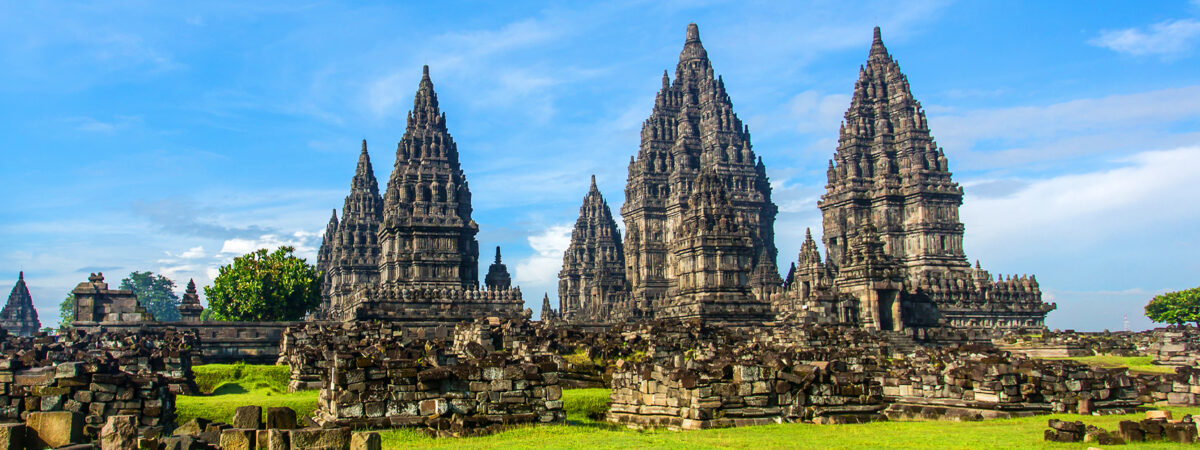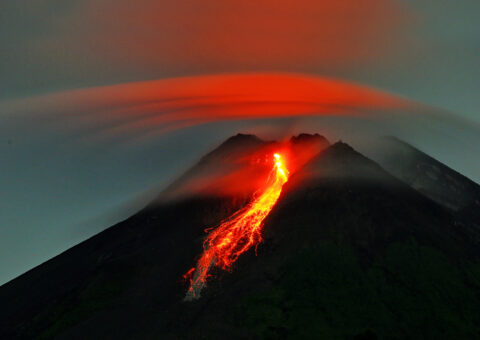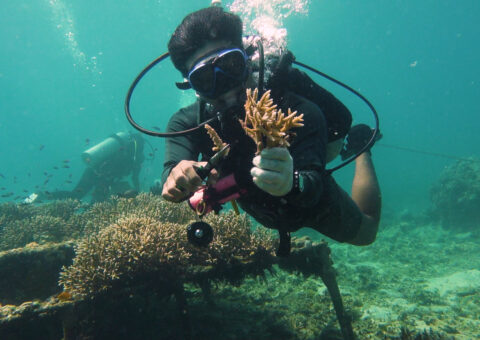The once-upon-a-time capital of the Mataram Empire, Yogyakarta retains its spirit and lives up to its fame as the artistic hub of Indonesia. Ancient arts, from gamelan music to shadow puppet theatre, thrive alongside modern galleries and creative performances. This same smooth fusion of tradition and progress can be seen everywhere; in the rice fields and pagoda-like Joglo houses filling the gaps between shiny contemporary buildings, and in all aspects of daily life. Local expert Mark Levitin takes us on a voyage of discovery.
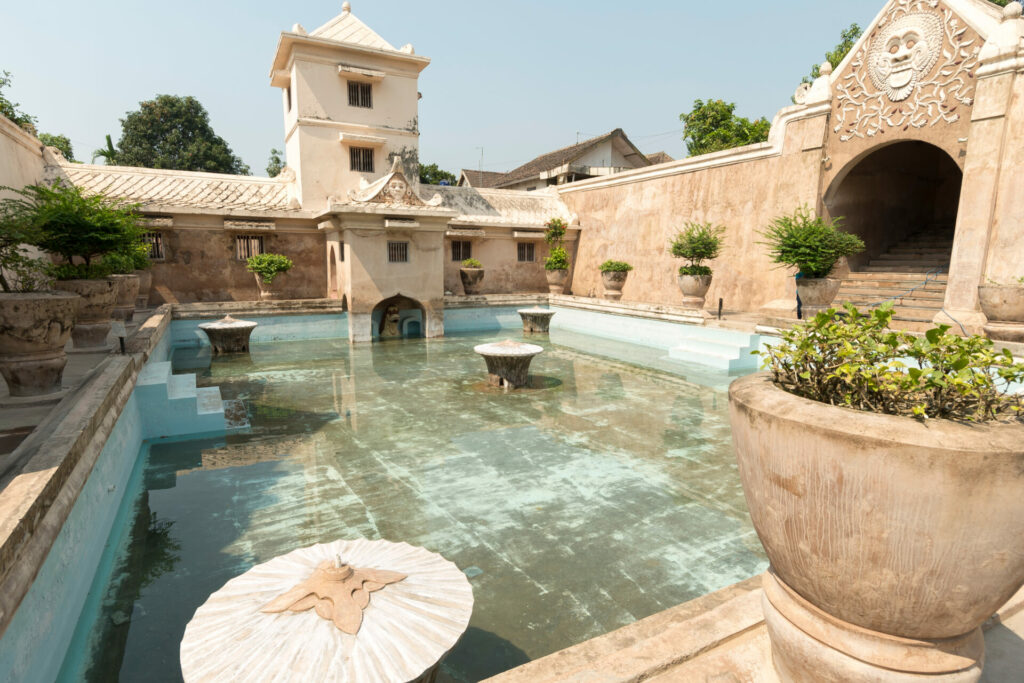
Upon Arrival
After a visitor arrives in my city, I always recommend going straight to Taman Sari Underground Palace and the old quarter nearby. Yes, the standard answer would be Marlioboro Street with its markets and souvenir stalls, but that only showcases how Yogyakarta grows and adapts. The old neighbourhoods represent what Jogja has always been.
The best time to be here is early morning or late afternoon. That’s when it’s not too hot for a long stroll. Otherwise, life goes on around the clock here. Taman Sari itself is open from 09:00 to 15:00.
I tell first-time travellers to get out of the city, visit traditional villages, waterfalls, volcanoes, and temple ruins. I also tell them to avoid wasting too much time (and money, and liver cells) in the bars of Prawirotaman Street.
People from here know better than to look for ciu — local moonshine made of rice or fruits, including a curious variety produced from snakefruit. They’re Muslim, after all. Instead, they would rather enjoy something from a selection of tens of coffee varieties, or angkringan — Javanese herbal hot drinks.
The best museum to start your journey and get a good sense of this city is Museum Sonobudoyo because it covers the entire history of Yogyakarta from prehistoric times to modern days, and explains the intricate culture of Central Java in vitro — just what you need before you go out and explore it in vivo.
Parents should take their kids to Chocolate Monggo Museum and Factory because, well, it’s chocolate. This is the sweetest place in Jogja, literally. A place to digest the methods of making every imaginable type of chocolate, then the chocolate itself.
Food from the Heart
Among the food (or dishes) my city is most proud of, gudeg is an absolute must. It’s the most famous local speciality — as for the taste, it’s inevitably subjective. Do you like sweetish, slightly overcooked jackfruit? Go for it if you do. I like to go to local warungs, basic eateries with homemade food, to really enjoy it. One good example is Gudeg mBok Joyo near the city centre.
When we get together to celebrate coffee is what people here traditionally drink. I like to gather my friends and go to de Ngokow Coffee Roastery for a cuppa. Set in an historical building, it serves coffee from every province of Indonesia brewed in a dozen different styles, and a large variety of herbal teas.
When I eat completely local, I will go to a mie ayam stall. A simple noodle soup with chicken, mie ayam is filling, extremely cheap — normally below 0.5$ per portion — and delicious. Just gently push away the meowing carpet of fat cats waiting for a dropped morsel, and find a place to sit on a straw mat — many such stalls don’t even bother with chairs.
Another two classic, iconic specialities of Yogyakarta are mie lethek and kopi joss. Mie lethek is a classical type of noodle, apparently brought from China by Tiong Hoa people ages ago. The dough for the noodles is kneaded the time-honoured way, with a large round stone pulled by a bull. Kopi joss, on the other hand, is a recent invention: an inventive coffee vendor decided to try dipping a glowing ember in a cup of freshly brewed coffee (or dropped it there accidentally, according to a different tale). This trick has somehow survived and evolved to become a prized recipe. Kopi joss stalls — the original one and a growing number of copycats, pretty much indistinguishable — can be found along Marlioboro Street just north of Tugu Railway Station.
The part of town where locals come for traditional food is, well, everywhere. It’s Indonesia, most food here is traditional, and warungs are way more common than restaurants. And if you get tired of Javanese specialities, look for a “Masakan Padang” sign — this is where you find the world-famous Minang cuisine of Sumatra.
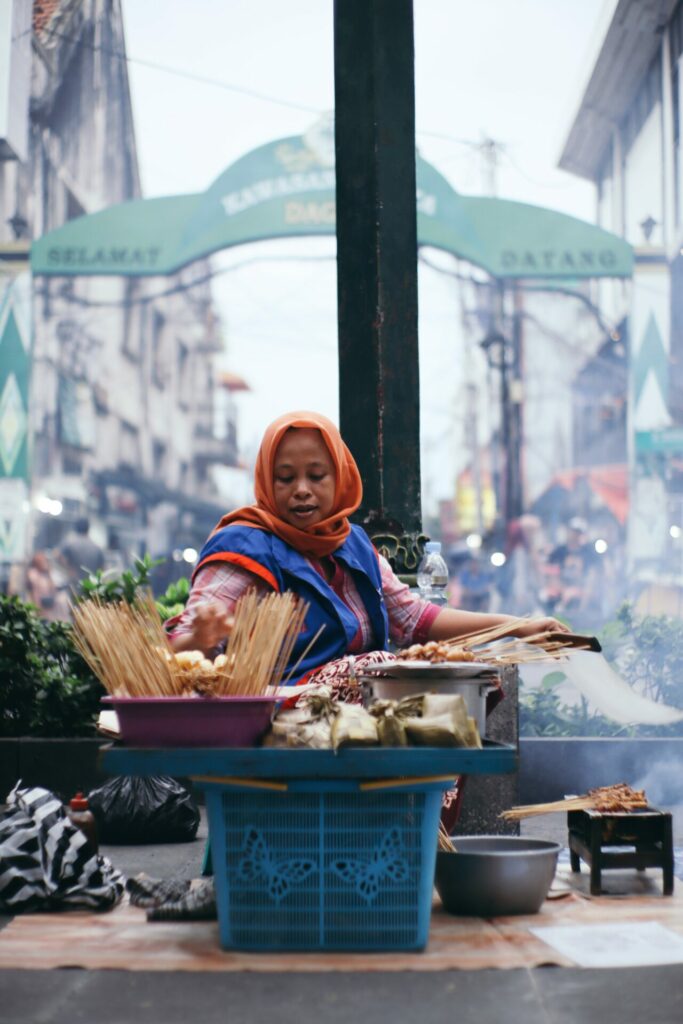
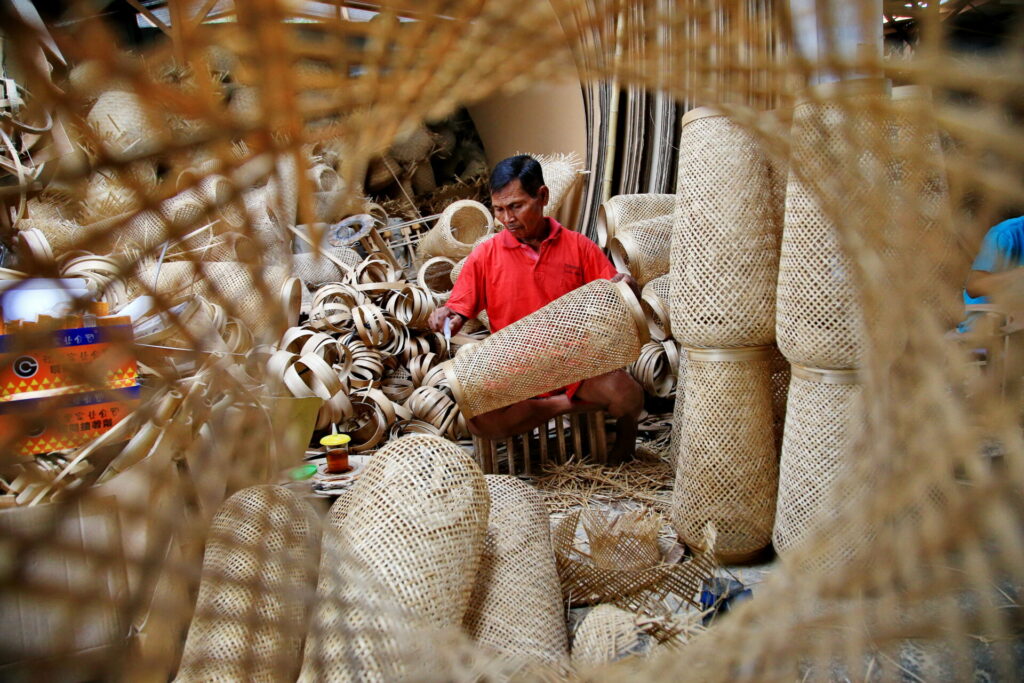
Shopping Locally
My city is known for just about every traditional craft in Indonesia. Painting batik? Yogyakarta is one of the art’s birthplaces. Making kris, the spirit daggers? Master Jeno Harumbrojo, the most venerated m’pu (magic blacksmith) in the whole country, lives and works in Godean, just west of town. Carving topeng, the wooden masks for classical Javanese dances? Bobung village south of Jogja has specialised in this craft for centuries. And so on. There are hundreds of craft villages in the vicinity of Yogyakarta.
The best market to buy Javanese everyday items like batik dresses and rattan baskets is Pasar Beringharjo.
I always take visitors to craft villages to buy real, local souvenirs. The products are often made in front of your eyes, and the vibe is as authentic as you can imagine — visualise an old bearded artisan weaving a basket or dyeing fabric in the courtyard of a high-roofed Joglo hut, and you won’t be far from the truth. And we know to avoid tourist souvenir shops because, at best, their merchandise comes from the same craftsmen, but through one or more greedy intermediaries, and with a massive ‘silly tourist surcharge’. At worst, it’s pumped out by an automated production line in China.
Getting Deeper Into Yogyakarta
A great book to learn more about my city is Yogyakarta: Cultural Heart of Indonesia by Michael Smithies.
Most people know about the kraton, the sultan’s palace, parts of which are open to tourists; but Kota Gede, the ruins of the old royal residence, should also be visited. This was the focal point of Jogja for centuries — and in a city where the monarchs are believed to possess great spiritual powers, sacred significance is assigned to anything related to them. You may see people praying, meditating or performing ritual ablutions in the ancient pool. Modest dress is a must, you won’t be allowed to enter otherwise.
My city is a place people are attracted to because of its culture, both ancient and modern. Old beliefs and rituals here mix freely with hippie vibes and creative initiatives. The same person may run a musical radio channel and a school of debus (the magic art of invulnerability), where the entry exam involves licking red-hot iron (three times, just to be sure you qualify). Ah yes, and the versatile businessman in question is also a relative of the current president… but that’s a different story.
To celebrate my city at its best, come on the 1st of Suro — a sort of local Halloween. This is a date in the old Javanese calendar when this world and the supernatural one intersect briefly, letting spirits in and out. Almost every household stages a ceremony on this day: a night vigil, a ritual purification of heirlooms, or a shamanic possession. The sultan’s dynasty celebrates the 1st of Suro with a Mubeng Beteng Festival — a grandiose, impressive procession of royalty and the royal guard marching through the city in total silence.
Most people think of my city as a place to see preserved traces of Javanese history and culture, but really this is a destination to observe it alive and growing. Ruined temples outside Jogja may tell nostalgically of the glorious imperial times, but the sultan is still here, in the kraton, and his bloodline runs from the legendary rulers of the past. Wayang kulit — shadow puppet theatre — is re-created for tourists, but they may not realise that it’s just as commonly performed at local cultural gatherings and religious festivals. Nothing is lost, not here.
This is one of the best places in the world to witness a volcanic eruption. Locals are not afraid of daily lava flows from the restless Mount Merapi just 20 km north of the city because of the mythical pact signed between the sultan’s dynasty, the volcano’s spirit, and the Goddess of the South Seas, Nyi Roro Kidul. This, if you think about it, also makes Yogyakarta one of the best places in the world to witness magic beliefs in daily life.
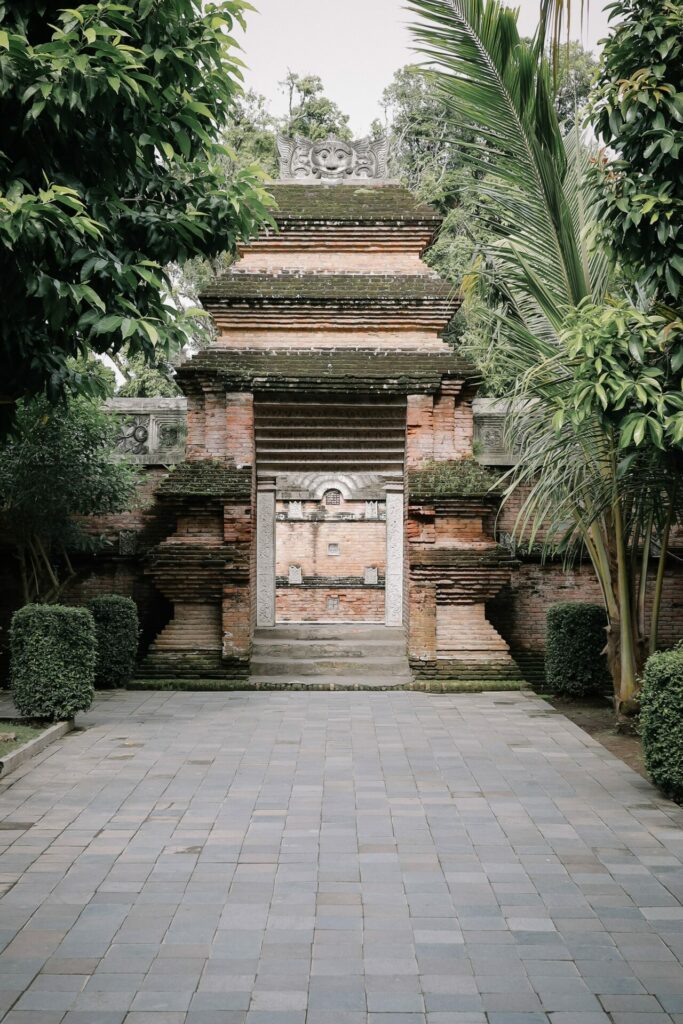
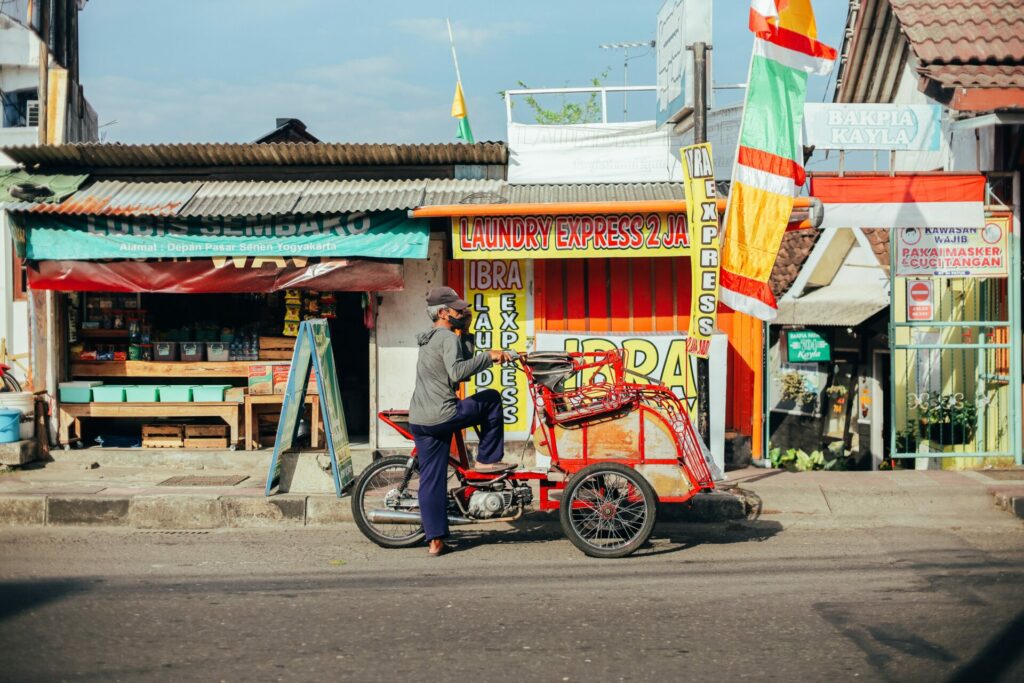
Getting Around Yogyakarta
One thing you should know about getting around my city is that buses here run infrequently, on convoluted, inconvenient routes. The system was designed to separate them from the rest of the car traffic — by creating special “corridors”, bus-only lanes. It didn’t work out. As often as not, it’s faster to walk. Nicer, too.
The best way to travel in my city is through motorbike-hailing apps: Grab and Gojek. Fast, cheap, and immune to traffic jams, they also present a good way to support the less-educated local communities — one of the most common jobs for sustenance farmers trying to make some additional income in the city is motorbike taxi driving.
Luckily this method of transportation also allows me to see Jogja up and close, breathe its air — still not excessively polluted — and if need be, cruise around its old narrow alleys looking for living culture: from the way people make little gardens in their backyards to age-old magic ceremonies staged to celebrate someone’s birthday. The drivers might provide amusing or enlightening commentaries — they, after all, hail from the same background.
Outside The City
To get away and into the outdoors, I like to hop on a motorbike and check the evergreen surroundings of Yogyakarta by the compass: the northern direction takes me to the lava-encrusted slopes of Mt Merapi, tea plantations and azure rivers lie in Kulon Progo to the west, the southern county of Bantul provides access to the ocean and some of the best craft villages, while Gunung Kidul to the east is karst country — caves, multi-tiered waterfalls, and weirdly shaped cliffs.
For a day trip just beyond my city, I like to visit Kaliurang. A viewing tower here allows visitors to observe explosive activity on the summit of Mt Merapi without risking sudden incineration, from a safe distance. Of course, lava glow isn’t visible in daylight, so this is more of an evening trip.
Many people will head to Parangtritis Beach to swim, but locals know to go to freshwater streams instead: the waves on the southern coast of Java are too strong for a comfortable splash, while the natural pools of Kedung Pengilon Waterfall or Mudal River are perfectly relaxed. In fact, while Javanese families come here for a picnic on weekends, on weekdays a few spiritually-minded local men might arrive to meditate in the flowing water. If you absolutely need a dose of ocean, try Siung Beach in Gunung Kidul — rocky promontories protect it on two sides, reducing the waves.
I really enjoy the view of my city from Spot Riyadi — a bend of a nameless country road passing above town that offers a panoramic view of Prambanan Temple, the urban labyrinths of Jogja, and on a clear day, the smoking cone of Mt Merapi in the background. A small café here serves the usual refreshments.
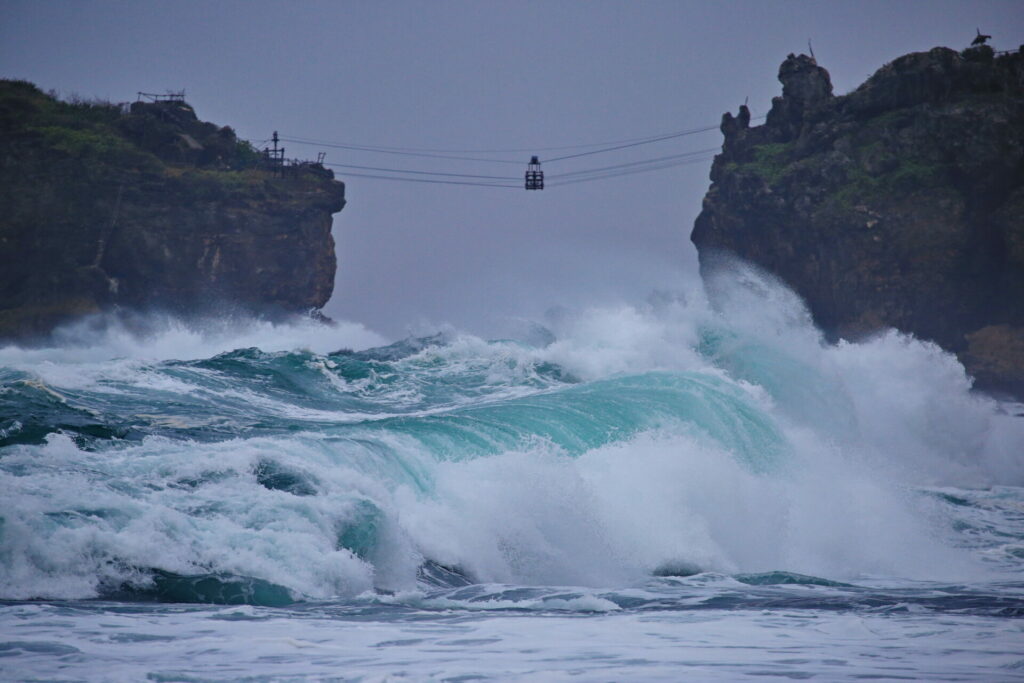
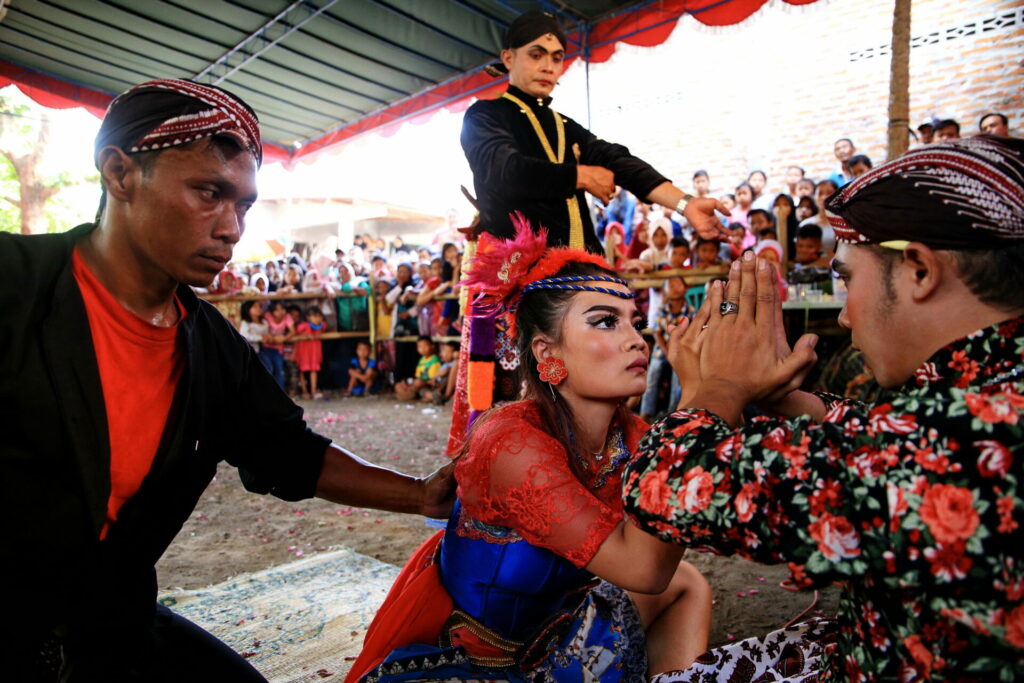
Connecting with Locals
When I want to have fun and celebrate being out in my city, I pay a visit to an art café or a gallery. Kedai Kebun Forum is an old favourite — it’s a café and an art space running exhibitions, music performances and discussion clubs most evenings.
To hang out with my friends and go to a real insider spot, I go to the little alleys behind the guesthouses of Prawirotaman Street, where the young intellectuals of Jogja usually gather to chill. The student hangout in E Warung Omah Tabon is one good example.
The best resource for finding out what’s going on around town (events) is the official calendar published by Yogyakarta Tourist Bureau. Regional calendars for each county add some interesting localised options (such as farmland purification ceremonies, thanksgiving to the sea, and other rituals), but are only available in the Indonesian language on the corresponding government websites.
When I want to enjoy my city without spending much (or any) money, I look for a jathilan (ghost possession dance) or an archery competition. Both are very common — jemparingan, a Javanese sport where archers shoot from a sitting position, trying to hit a long vertical target, is regularly practised in Paguyuban Jemparingan Adiwinoto, as well as the small park in front of Royal Ambarrukmo Hotel, and jathilan performances are advertised in Facebook groups, such as Info Jathilan Jogja.
Gamelan performances, staged in the kraton every so often, are my first choice for music because this represents the classics here — very much like an organ recital of Bach somewhere in Europe. And when I feel like something less traditional, I go to Asmara Café — most evenings, there’s live jazz on stage, and the crowd is a mix of local artists and expats.
Finding Solitude in Yogyakarta
When I want to go somewhere to sit and relax in my incredible city, I go to the less-known temple ruins — not Prambanan, full of tourists all day long, but one of the hidden little shrines like Candi Kalasan or Sojiwan. They’re free to wander around, too, and the only company you’re likely to have is a stray cow.
What makes me proudest of my city is its spirituality — high and mystical, yet without the aloof separation from the mundane, fully merged with daily proceedings at the slow pace of growing rice stalks. The best present for newlyweds, for example, is a blessing from their long-dead forefathers temporarily occupying the bodies of jathilan dancers. Even a posh, ultra-modern café is more likely to be set on the bank of a turbid volcanic river, in the open air (and to hell with the occasional downpour) than inside a cramped, hectic plaza.
Somehow the gradual line of human progress leading from the jungle, through agriculture, into the urban environment, and all the way to the digital world has never been interrupted here at any stage. Corporate offices, conceptual galleries, and youngsters submerged in mobile gaming flow seamlessly into pagan masked processions in old lanes, pottery workshops, and the tangible presence of old gods.
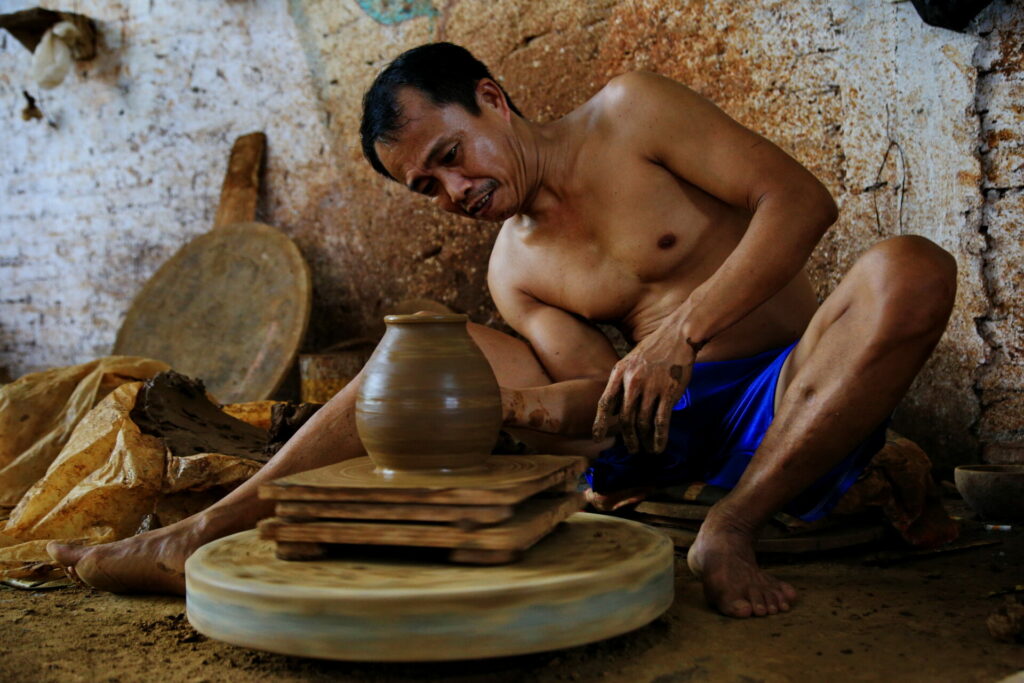
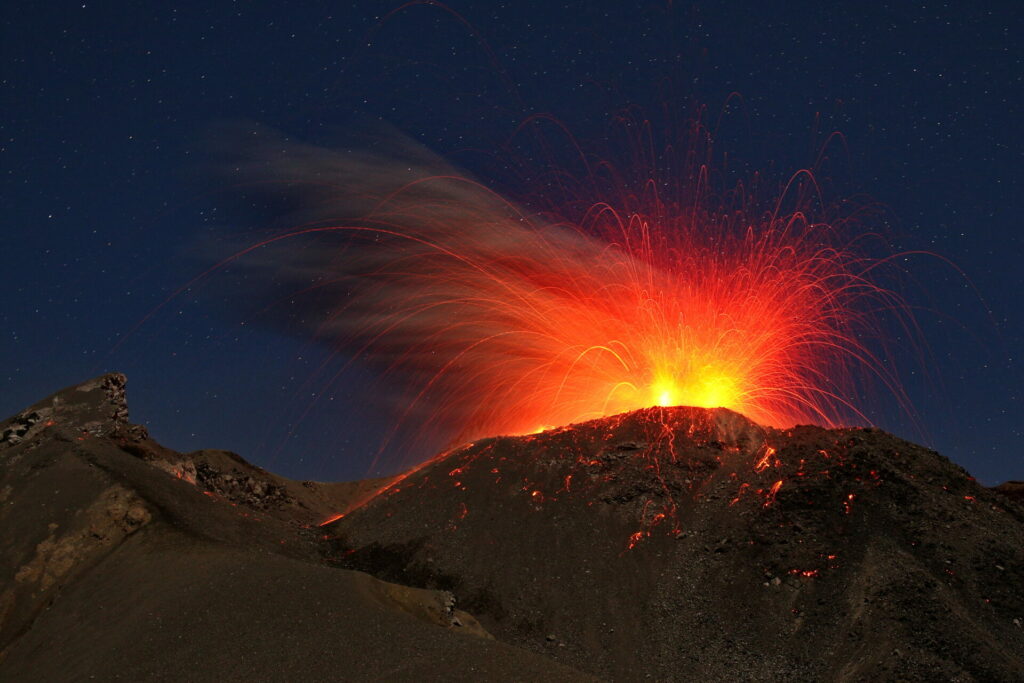
When the Seasons Change, This City Shines…
…except the seasons don’t change really, not this close to the equator; so it shines year-round!
Monsoon (December-March) is the best time to visit the waterfalls. Central Java is heavily populated and predominantly agrarian; water, already scarce in the dry months, gets diverted to irrigate numerous rice fields, leaving little to demonstrate the power of gravity over natural streams. Only when the rains arrive do waterfalls around Yogyakarta truly come alive. Sri Gethuk is the most famous, but the choice is almost limitless in the hilly countryside surrounding Jogja. It may be difficult to get to the more remote ones though — here, when it rains, it pours. Mornings are normally your best bet, often they’re clear and sunny; by early afternoon it starts dripping, and in the evening the whole area is one giant waterfall.
The dry season (April-November) is a great time to climb volcanoes. July and August are the best — that’s when the air is crisp and transparent, cool enough for water vapour to condense in the valleys, creating the proverbial “sea of clouds” scene. Camp on the summit of Mount Merbabu north of Jogja to combine three unique vistas: of village lights turning on down below at sunset to reflect the endless stars appearing up in the sky, of Merapi volcano spewing lava flows at night, and of that fluffy white sea of clouds at dawn.

